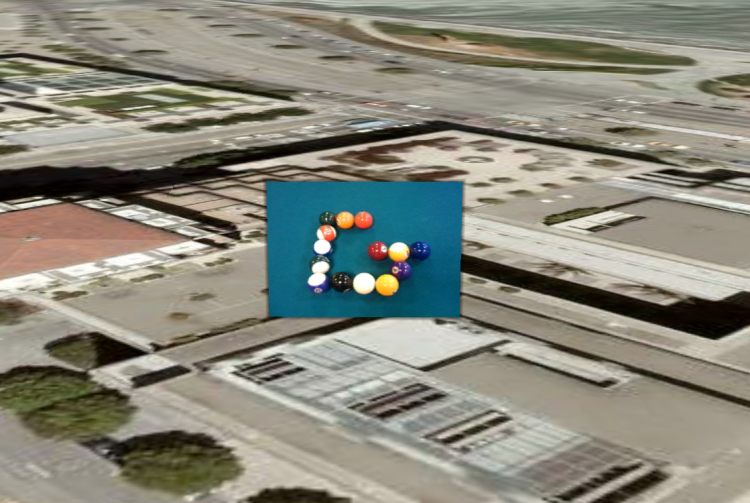2009 年 1 月
目标
本教程介绍如何使用地理标记的照片创建 KML PhotoOverlays。虽然示例代码是用 Python 编写的,但其他编程语言中也有许多类似的库,因此将此代码转换为其他语言应该不成问题。本文中的代码依赖于一个开源 Python 库 EXIF.py。
简介
数码相机是非常出色的设备。许多用户可能没有意识到,他们使用 Google 相册的功能远不止拍摄照片和视频。它们还会使用有关相机及其设置的元数据标记这些视频和照片。在过去几年中,人们找到了一些方法来向这些信息添加地理数据,这些数据要么由相机制造商嵌入(例如某些 Ricoh 和 Nikon 相机),要么通过 GPS 记录器和 EyeFi Explore 等设备添加。iPhone 等拍照手机和使用 Android 操作系统的手机(例如 T-Mobile 的 G1)会自动嵌入这些数据。某些照片上传网站(例如 Panoramio、Picasa 线上相册和 Flickr)会自动解析 GPS 数据,并使用这些数据为照片添加地理标记。然后,您可以在 Feed 中获取这些数据。但这样有什么乐趣呢?本文将探讨如何自行获取这些数据。
EXIF 标头
将数据嵌入到图片文件中的最常见方法是使用可交换图像文件格式 (EXIF)。数据以二进制形式按标准方式存储在 EXIF 标头中。如果您了解 EXIF 标头的规范,可以自行解析这些标头。幸运的是,有人已经完成了这项艰巨的任务,并为您编写了一个 Python 模块。EXIF.py 开源库是读取 JPEG 文件头的好工具。
《行为准则》
本文的示例代码位于以下文件中:exif2kml.py。如果您想直接跳到使用该模块,请下载该模块以及 EXIF.py,并将它们放在同一目录下。运行 python exif2kml.py foo.jpg,将 foo.jpg 替换为带有地理标记的照片的路径。它将生成一个名为 test.kml 的文件。
解析 Exif 标头
EXIF.py 提供了一个简单的接口,用于提取 Exif 标头。只需运行 process_file() 函数,它就会以 dict 对象的形式返回标头。
def GetHeaders(the_file):
"""Handles getting the Exif headers and returns them as a dict.
Args:
the_file: A file object
Returns:
a dict mapping keys corresponding to the Exif headers of a file.
"""
data = EXIF.process_file(the_file, 'UNDEF', False, False, False)
return data获得 Exif 标头后,您需要提取 GPS 坐标。EXIF.py 将这些视为 Ratio 对象,即用于存储值的分子和分母的对象。这样可以设置精确的比率,而不是依赖于浮点数。不过,KML 需要的是小数,而不是比率。因此,您需要提取每个坐标,并将分子和分母转换为一个浮点数(以十进制度表示):
def DmsToDecimal(degree_num, degree_den, minute_num, minute_den,
second_num, second_den):
"""Converts the Degree/Minute/Second formatted GPS data to decimal degrees.
Args:
degree_num: The numerator of the degree object.
degree_den: The denominator of the degree object.
minute_num: The numerator of the minute object.
minute_den: The denominator of the minute object.
second_num: The numerator of the second object.
second_den: The denominator of the second object.
Returns:
A deciminal degree.
"""
degree = float(degree_num)/float(degree_den)
minute = float(minute_num)/float(minute_den)/60
second = float(second_num)/float(second_den)/3600
return degree + minute + second
def GetGps(data):
"""Parses out the GPS coordinates from the file.
Args:
data: A dict object representing the Exif headers of the photo.
Returns:
A tuple representing the latitude, longitude, and altitude of the photo.
"""
lat_dms = data['GPS GPSLatitude'].values
long_dms = data['GPS GPSLongitude'].values
latitude = DmsToDecimal(lat_dms[0].num, lat_dms[0].den,
lat_dms[1].num, lat_dms[1].den,
lat_dms[2].num, lat_dms[2].den)
longitude = DmsToDecimal(long_dms[0].num, long_dms[0].den,
long_dms[1].num, long_dms[1].den,
long_dms[2].num, long_dms[2].den)
if data['GPS GPSLatitudeRef'].printable == 'S': latitude *= -1
if data['GPS GPSLongitudeRef'].printable == 'W': longitude *= -1
altitude = None
try:
alt = data['GPS GPSAltitude'].values[0]
altitude = alt.num/alt.den
if data['GPS GPSAltitudeRef'] == 1: altitude *= -1
except KeyError:
altitude = 0
return latitude, longitude, altitude
获得坐标后,您可以轻松为每张照片创建一个简单的 PhotoOverlay:
def CreatePhotoOverlay(kml_doc, file_name, the_file, file_iterator): """Creates a PhotoOverlay element in the kml_doc element. Args: kml_doc: An XML document object. file_name: The name of the file. the_file: The file object. file_iterator: The file iterator, used to create the id. Returns: An XML element representing the PhotoOverlay. """ photo_id = 'photo%s' % file_iterator data = GetHeaders(the_file) coords = GetGps(data) po = kml_doc.createElement('PhotoOverlay') po.setAttribute('id', photo_id) name = kml_doc.createElement('name') name.appendChild(kml_doc.createTextNode(file_name)) description = kml_doc.createElement('description') description.appendChild(kml_doc.createCDATASection('<a href="#%s">' 'Click here to fly into ' 'photo</a>' % photo_id)) po.appendChild(name) po.appendChild(description) icon = kml_doc.createElement('icon') href = kml_doc.createElement('href') href.appendChild(kml_doc.createTextNode(file_name)) camera = kml_doc.createElement('Camera') longitude = kml_doc.createElement('longitude') latitude = kml_doc.createElement('latitude') altitude = kml_doc.createElement('altitude') tilt = kml_doc.createElement('tilt') # Determines the proportions of the image and uses them to set FOV. width = float(data['EXIF ExifImageWidth'].printable) length = float(data['EXIF ExifImageLength'].printable) lf = str(width/length * -20.0) rf = str(width/length * 20.0) longitude.appendChild(kml_doc.createTextNode(str(coords[1]))) latitude.appendChild(kml_doc.createTextNode(str(coords[0]))) altitude.appendChild(kml_doc.createTextNode('10')) tilt.appendChild(kml_doc.createTextNode('90')) camera.appendChild(longitude) camera.appendChild(latitude) camera.appendChild(altitude) camera.appendChild(tilt) icon.appendChild(href) viewvolume = kml_doc.createElement('ViewVolume') leftfov = kml_doc.createElement('leftFov') rightfov = kml_doc.createElement('rightFov') bottomfov = kml_doc.createElement('bottomFov') topfov = kml_doc.createElement('topFov') near = kml_doc.createElement('near') leftfov.appendChild(kml_doc.createTextNode(lf)) rightfov.appendChild(kml_doc.createTextNode(rf)) bottomfov.appendChild(kml_doc.createTextNode('-20')) topfov.appendChild(kml_doc.createTextNode('20')) near.appendChild(kml_doc.createTextNode('10')) viewvolume.appendChild(leftfov) viewvolume.appendChild(rightfov) viewvolume.appendChild(bottomfov) viewvolume.appendChild(topfov) viewvolume.appendChild(near) po.appendChild(camera) po.appendChild(icon) po.appendChild(viewvolume) point = kml_doc.createElement('point') coordinates = kml_doc.createElement('coordinates') coordinates.appendChild(kml_doc.createTextNode('%s,%s,%s' %(coords[1], coords[0], coords[2]))) point.appendChild(coordinates) po.appendChild(point) document = kml_doc.getElementsByTagName('Document')[0] document.appendChild(po)
您可以看到,我们只是使用了标准的 W3C DOM 方法,因为这些方法在大多数编程语言中都可用。如需了解整个流程的运作方式,请点击此处下载代码。
此示例未充分利用 PhotoOverlays 的强大功能,而 PhotoOverlays 可让您深入探索高分辨率照片。不过,它确实展示了如何以广告牌样式在 Google 地球上悬挂照片。下面是使用此代码创建的 KML 文件示例:
<?xml version="1.0" encoding="utf-8"?>
<kml xmlns="http://www.opengis.net/kml/2.2">
<Document>
<PhotoOverlay id="photo0">
<name>
1228258523134.jpg
</name>
<description>
<![CDATA[<a href="#photo0">Click here to fly into photo</a>]]> </description>
<Camera>
<longitude>
-122.3902159196034
</longitude>
<latitude>
37.78961266330473
</latitude>
<altitude>
10
</altitude>
<tilt>
90
</tilt>
</Camera>
<Icon>
<href>
1228258523134.jpg
</href>
</Icon>
<ViewVolume>
<leftFov>
-26.6666666667
</leftFov>
<rightFov>
26.6666666667
</rightFov>
<bottomFov>
-20
</bottomFov>
<topFov>
20
</topFov>
<near>
10
</near>
</ViewVolume>
<Point>
<coordinates>
-122.3902159196034,37.78961266330473,0
</coordinates>
</Point>
</PhotoOverlay>
</Document>
</kml>以下是它在 Google 地球中的显示效果:

注意事项
照片地理标记功能仍处于起步阶段。
请注意以下事项:
- GPS 设备并非始终 100% 准确,尤其是相机中的 GPS 设备,因此您应检查照片的位置信息。
- 许多设备不跟踪海拔高度,而是将其设置为 0。如果您非常重视海拔高度数据,则应寻找其他方式来获取该数据。
- GPS 位置是相机的位置,而不是照片拍摄对象的位置。因此,此示例将 Camera 元素放置在 GPS 位置,而将实际照片放置在该位置之外。
- Exif 不会捕获有关相机指向方向的信息,因此您可能需要调整
PhotoOverlays。好消息是,某些设备(例如基于 Android 操作系统的手机)确实允许您直接捕获指南针方向和倾斜度等数据,只是无法在 Exif 标头中捕获。
尽管如此,这仍然是一种强大的照片可视化方式。希望在不久的将来,我们能看到更多更准确的照片地理标记。
后续步骤
既然您已开始使用 EXIF 标头,不妨探索一下 EXIF 规范。其中存储了许多其他数据,您可能对捕获这些数据并将其放入说明气泡中感兴趣。您还可以考虑使用 ImagePyramids 创建更丰富的 PhotoOverlays。开发者指南中关于 PhotoOverlays 的文章对如何使用它们进行了很好的概述。
